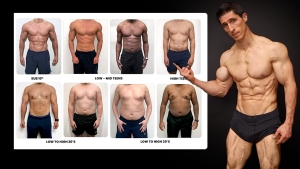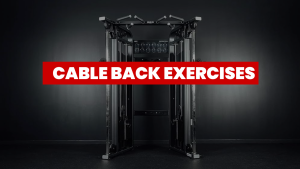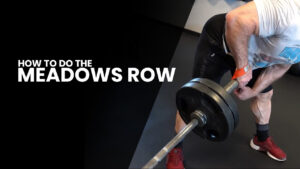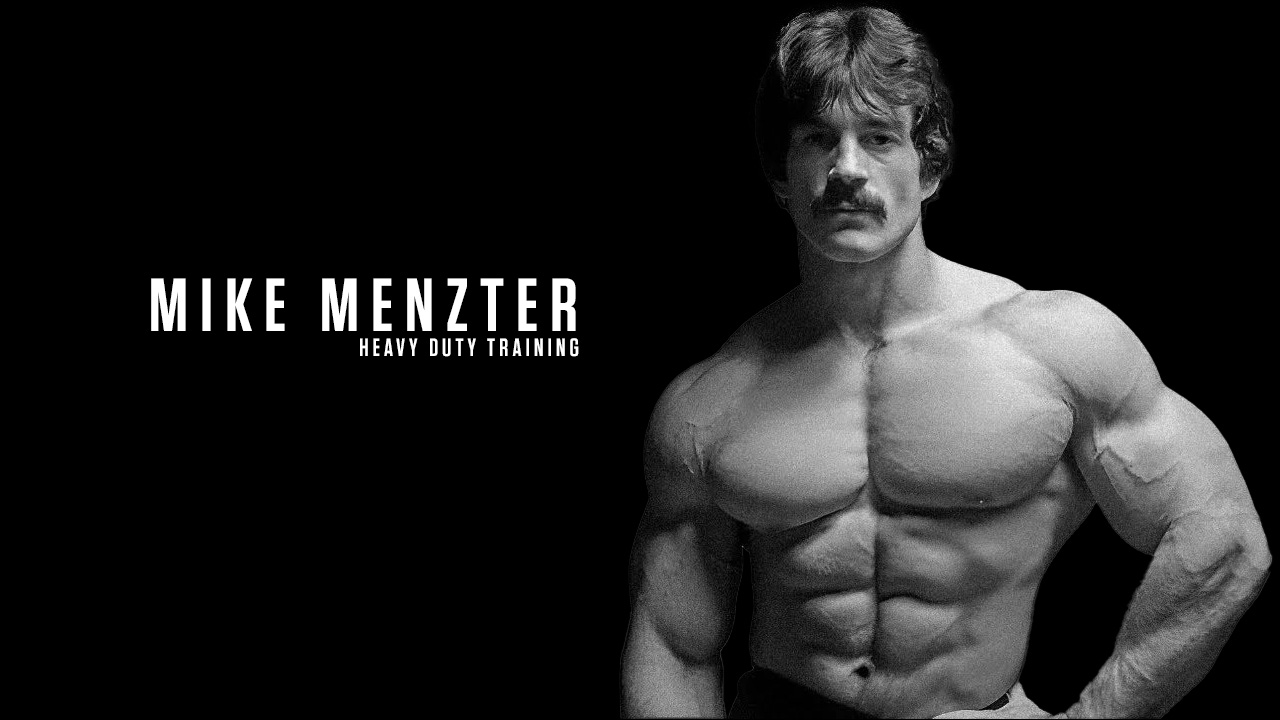
IS ONE SET ENOUGH?
That’s the kind of reaction you’d get if you walked into most gyms and told someone you were training the Mike Mentzer way.
But here’s the thing most modern bodybuilders and fitness enthusiasts miss: high-intensity doesn’t mean low-effort. It means all-out.
It means pushing your muscles to failure, sometimes even beyond failure, with heavy weights, perfect original form, and minimal time periods.
And for legendary bodybuilder Mike Mentzer, it meant doing it all in a single workout.
Even though he was in the heavyweight class, Mike Mentzer didn’t just lift heavy amounts of weight. He flipped the script on everything we thought we knew about muscle growth.
While Arnold Schwarzenegger and Frank Zane were grinding through high-volume training programs for hours a day, Mentzer pushed for one all-out set to failure and then walked out of the gym.
His high-intensity training (HIT) techniques were bold, brutal, and time-efficient. But were they effective?
Iconic bodybuilders like six-time Mr. Olympia Dorian Yates thought so.
And after trying some of Mentzer’s methods, like the Close-Grip Pulldown taken to muscular failure, so do I.
Today, I’m going to break down some important points of Mentzer’s training philosophy and approach to bodybuilding.
I’ll compare it to modern ideas on bodybuilding and show you how to apply it to your actual workout routine, whether you’re chasing muscle mass, rehabbing an injury, or just sick of lengthy workout sessions.
THE ONE-SET APPROACH
Conventional bodybuilding norms and a bit of bro science have drilled this into our heads for decades: if you want maximum muscle growth, you need frequent workouts, multiple sets per body part, and a week of training that’s packed with separate workouts for everything.
Just open any issue of the classic bodybuilding magazines of the late 1960s and you’ll see world-class bodybuilders following traditional routines, pounding through 12-20 reps per exercise, often six days per week.
But then Mike Mentzer, a true bodybuilding icon, came up with a revolutionary approach to weight training: one all-out set per exercise, taken to absolute failure.
And guess what? He still built pounds of muscle, even in the heavyweight division of competitive bodybuilding.
THE SCIENCE BEHIND THE ONE-SET APPROACH
Mike Mentzer’s training method wasn’t just some hardcore gimmick. It was rooted in muscle physiology and his knowledge of stress physiology and was built on a scientific understanding of how muscle fibers grow.
He didn’t just challenge conventional bodybuilding norms. He backed it up with brutal intensity and results.
So, let’s break down the science:
When you push a muscle to full-rep failure, you’re recruiting the largest motor units, those responsible for high-threshold, fast-twitch muscle fibers.
According to Henneman’s Size Principle, the body recruits motor units in order of size from small to large.
That means unless you take sets to failure, you’re not fully activating those growth-prone fibers, no matter how many sets per body part you do.
A 2016 study published in the Journal of Applied Physiology confirmed that training to failure results in greater muscle fiber activation and produces a stronger stimulus for muscle growth, especially in the 6-8 rep range using heavier weight and controlled tempo. [1]
Mentzer’s HIT approach applied this principle with surgical precision.
He emphasized one intensity training routine per movement, whether Leg Presses, Machine Pullovers, Barbell Curls, Lateral Raises, or Bulgarian Split Squats, and took it all the way to absolute failure.
No momentum. No sloppy form. Just strict form through a full range of motion in the ideal rep range of 6-8 repetitions.
This kind of mechanical tension, especially when paired with eccentric control, is one of the three pillars of hypertrophy (alongside metabolic stress and muscle damage).
But here’s the kicker: more volume doesn’t mean more growth if high intensity weight training is missing.
That’s why Mentzer’s one-set bodybuilding philosophy wasn’t a shortcut. It was a calculated, effective training program for lifters who could truly bring it.
Not to mention a fantastic step for getting those sought after gains, whether your goal is amateur bodybuilding competitions or simply looking better naked.
JEFF’S TAKE: WHEN ONE SET MAKES SENSE
When I was dealing with an injury, I couldn’t stick to a typical training schedule with high volume.
So, I tried a Mentzer-inspired plan: fewer sets per muscle group, shorter and infrequent training sessions, and nothing but high-intensity workouts taken to failure.
The results? Stronger arm muscles, faster muscular development and repair, and less fatigue.
By reducing volume but pushing every set to the limit, I got more out of each training session without wrecking my joints.
It also forced me to pay closer attention to the other key aspects of recovery including smart caloric intake, hitting my protein shake post-workout, and dialing in my calories per day.
Remember that your body is an integrated unit. If one part breaks down, everything slows down, including your gains.
HOW TO DO THE ONE-SET APPROACH
The core of Mike Mentzer’s Heavy Duty method was all about one all-out set taken to absolute failure.
But here’s the part most lifters miss. You don’t just walk in and hit that set cold. Mentzer always included a ramp-up through strategic warm-up sets to prime the nervous system, prevent injury, and sharpen focus.
Step 1: The Warm-Up Sets
You’ll perform 1-3 warm-up sets depending on the exercise and how heavy you plan to go.
- Warm-Up 1: Use ~50% of your target working weight for 8–10 reps
- Warm-Up 2: Increase to ~75% for 4–6 reps
- (Optional) Warm-Up 3: If you’re going very heavy, hit ~90% for 1–2 reps
None of these should come close to failure. These are about movement quality and activation, not fatigue.
Step 2: The Working Set
This is the main event, the one that counts.
Take your working weight and perform one set to absolute failure, typically in the 6-10 rep range. Every rep should be controlled, with strict form and no momentum.
The goal is total muscle fiber recruitment. By the final rep, you should be physically unable to perform another rep in good form.
That’s what makes this single set effective and why you won’t need a second.
WHO SHOULD TRY THIS APPROACH?
If you’re just starting out, traditional routines are still your best teacher.
You need ample time to master proper form, dial in the 6-8 repetitions, and understand how to progressively overload your muscles without breaking down your joints.
The foundation of muscle hypertrophy still starts with consistency, movement quality, and control.
But once you’ve built that foundation, things change.
If you’ve been training for years and you’re no longer seeing returns from your current workout plan, or if you’re feeling the wear and tear from constant volume, then it might be time to reconsider your training method.
Maybe you’ve got less time to train. Maybe your elbows, knees, or shoulders aren’t what they used to be. Or maybe, like me, you’re coming back from injury and need a smarter path forward.
That’s when the HIT approach earns its place.
Instead of spending hours per week in the gym doing frequent workouts and stacking multiple sets per muscle group, you shift toward fewer, more focused training sessions.
BEST BICEPS EXERCISE: PULLDOWNS VS. CURLS
When Mike Mentzer claimed that the Close-Grip Supinated Pulldown was better than Bicep Curls for building your biceps, it sounded like pure blasphemy.
But when you dig into the biomechanics and real-world results, this wasn’t just another bold Mentzer quote.
It was a challenge to the entire theory of the art of bodybuilding.
For professional bodybuilders, it’s always been about combining compound exercises and isolation exercises to target every angle of a muscle.
But what Mentzer understood, and what more lifters need to relearn, is that not all movements are created equal in terms of biceps involvement.
Here’s why the close-grip pull-down works: It targets the biceps at both ends of shoulder flexion and elbow flexion. This is something most curl variations simply don’t accomplish.
By placing the arms overhead and pulling down through a supinated grip, you train the biceps across a wide range of motion while maintaining mechanical tension in the ideal range of 8-10 repetitions.
Unlike the curl, where shoulder position stays relatively static, this movement turns your biceps into an integrated unit responsible for both joint actions.
JEFF’S TAKE: REHAB-TESTED, SCIENCE-APPROVED
Now, I’ve always respected good curls. But when I tore my distal bicep tendon, curls were off the table.
Barbell curls, Machine Lateral Raises, even Rear Raises, they all aggravated the joint or forced compensation.
So, I tried the Close-Grip, Supinated Pulldown. And it worked better than I expected, even in light mode.
With a lighter weight and controlled tempo, I could create enough tension to promote muscle gain without compromising time for recovery. Why?
Because the exercise allowed me to isolate the biceps without excessive joint loading, especially when focusing on slow eccentrics, a proven hypertrophy driver.
In fact, a 2014 study in the European Journal of Applied Physiology found that eccentric loading produces greater muscle damage and leads to enhanced hypertrophic growth, particularly in the biceps. [2]
Better yet, this movement let me use intensity techniques like self-spotting and pre-exhaust supersets.
For example, I’d pre-fatigue the lats, then hit the Close-Grip, Supinated Pulldown with full biceps focus almost like a pre-exhaust superset designed for infrequent workouts.
It was a perfect fit for a low-volume approach, especially while managing periods between workouts and muscle healing.
One thing you might have noticed with this movement is they look an awful lot like Traditional Chin-Ups, and you would be right.
But there’s a problem with Chin-Ups. On paper, they’re a compound exercise with heavy biceps involvement.
But if your body weight is too high or your joints are beat up, you’re shifting stress onto the forearms and tendons.
That’s not what you want when trying to maximize muscle tissue activation and minimize injury risk.
As a coach, I’ve seen too many weightlifters and even elite bodybuilding hopefuls grind through Chin-Ups thinking more reps mean more gains only to get sidelined by medial elbow pain or tendon strain.
Let’s call it what it is: conventional wisdom that doesn’t hold up under the microscope.
HOW TO DO THE CLOSE-GRIP, SUPINATED
Most lifters chase bicep growth with endless curls, but Mike Mentzer saw this pulldown variation as the superior move. Why?
Because it trains the biceps the way they actually function: across two joints.
Done right, this isn’t just safer on your elbows, it’s a smarter way to load the biceps through a full, functional range of motion.

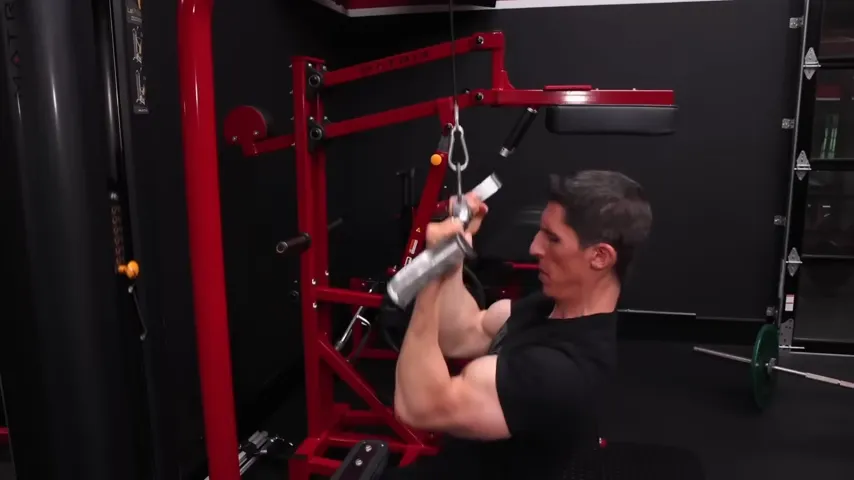
HOW TO DO THE CLOSE-GRIP SUPINATED PULLDOWN:
- Use a close grip (just inside shoulder-width) with your palms facing you (supinated).
- Sit down with your thighs locked under the pads and your spine tall. Don’t lean back excessively.
- Drive your elbows down and in, as you pull the bar toward your upper chest. Think about pulling with your biceps, not just your lats.
- At the bottom, pause briefly and squeeze the biceps hard. Don’t rush it.
- Slowly return the bar to the starting position. The eccentric is where most of the growth happens, so don’t let gravity do the work.
WHAT MAKES IT EFFECTIVE: By combining elbow flexion and shoulder flexion, this move creates tension across both ends of the biceps. That makes it more effective than most curls and easier to load eccentrically without joint strain.
RECOVERY IS 50% OF THE GAINS EQUATION
You can have the best training techniques, the perfect workout program, and grind through the most intense workouts known to man but if you’re not giving your body enough time to recover, you’ll never reach your full genetic potential.
Mike Mentzer wasn’t just shouting into the void when he said that growth happens outside the gym.
His workout philosophy centered on the core principle that the workout is only the stimulus.
The real work (the growth, the repair, the adaptation) happens when you’re sleeping, eating, and not training. In fact, the research backs him up.
A study published in The Journal of Physiology found that muscle protein synthesis (MPS), the process responsible for muscle repair and growth, is significantly elevated for up to 48 hours after resistance training. [3]
The catch is that continuing to train the same muscle too soon can interfere with that process and delay or reduce hypertrophy.
In simple terms, the insistence on training too often disrupts the very mechanism that builds muscle in the first place.
JEFF’S TAKE ON RECOVERY
I used to think I had to be in the gym six days a week, every week. Chest day, leg day, arms, and back all had to be hammered out in a structured push-pull system with minimal days of rest.
I mean, that’s what the bodybuilding magazines showed, right?
But once I started spacing out targeting muscle groups, skipping unnecessary sets, and actually using my days for rest to recover, my performance came back stronger.
My joints felt better. My muscle gains returned, even with less volume and fewer minutes per week. This was no accident.
It was the result of respecting muscle recovery as a critical aspect of training.
That includes quality sleep, proper nutrition (bodybuilding foods with a range of dishes and a reliable source of protein), and building in enough days of rest to let your body do what the science says it’s trying to do: repair.
Most lifters fall into what I call the “more-is-better” trap.
They stack sets beyond failure, max out pre-exhaustion supersets, and crush variations of chest workouts because they think more equals more.
But recovery isn’t weakness. It’s the driver of muscle growth.
In a 2017 meta-analysis in Frontiers in Physiology, researchers found that training volume matters but only up to a point.
Once you exceed optimal frequency of training or volume without adequate recovery, gains start to plateau or even regress. [4]
That’s the danger in fitness of neglecting recovery in favor of complexity.
HOW TO APPLY THIS TO YOUR ROUTINE
You don’t need to cut training entirely. You just need to be smarter about it. Here are some ways that you can incorporate Metzner’s ideas for recovery into your own workouts and routine.
Prioritize Rest Between Workouts
Mentzer advocated for extended rest periods, often recommending 4 to 7 days between training the same muscle group.
This approach to fitness allows for full recovery and muscle growth.
For example, if you’re using the one set approach and you train chest on Monday, wait until at least Friday or the following Monday before training it again.
Monitor Your Recovery
Listen to your body. If you’re still sore or feeling fatigued, give yourself the proper amount of time to recover.
Mentzer believed that training frequency should decrease as you get stronger, because lifting heavier weights places more stress on your body, requiring longer recovery periods.
Keep Workouts Short and Intense
Workouts should be brief but intense. Mentzer’s sessions often lasted 30 to 45 minutes, focusing on 1 to 2 sets per exercise, taken to failure.
This high-intensity, low-volume counterintuitive approach reduces the risk of overtraining and allows for better recovery.
Incorporate Proper Nutrition and Sleep
Recovery isn’t just about rest days. Ensure you’re consuming enough protein to support muscle repair and getting 7 to 9 hours of sleep per night. (Pro tip: consider a delicious protein powder before bed to support protein synthesis while you sleep.)
Both are crucial for optimal recovery and muscle growth.
Adjust Based on Progress
If you notice that your strength gains are plateauing or you’re feeling consistently fatigued, consider increasing your rest days.
Mentzer’s bodybuilding concepts focused on training less frequently but with higher intensity, ensuring that each workout is productive and contributes to muscle growth and explosive strength.
Mike Mentzer’s bodybuilding approach wasn’t about doing less. It was about doing what works.
One all-out set (preceded by warm-up sets), followed by real recovery, can trigger more growth than a dozen half-hearted ones.
Push to failure, back off, and let intensity, not volume, drive the results to achieve your ultimate potential.
Check out our complete line of ATHLEAN-RX Supplements and find the best training program for you based on your fitness level and goals.

- Mike Mentzer wasn’t just a bodybuilding expert. He was a disruptor. In an era obsessed with volume and marathon workouts, he introduced a brutally simple idea: train less, but harder, and let recovery do the rest.
- One perfectly executed set to absolute failure triggers more muscle fiber recruitment than multiple moderate sets.
- Warm-up sets matter. Ramp up with 1-3 progressively heavier sets, but never to failure. Save that for your working set.
- For the one-set approach, use a controlled 6-to-10 range for reps, strict form, and no momentum. Then take it to failure through intensity.
- The Close-Grip Supinated Pulldown hits the biceps harder than most curls by loading both elbow and shoulder flexion.
- Focus on slow eccentrics and maximum squeeze at the bottom. Make the biceps do the work, not your lats, not momentum.
- Muscle growth doesn’t happen during heavy duty training. It happens when you’re not training.
- Respect your recovery windows by taking solid breaks between workouts. Train with a few exercises per muscle group once every 6-7 days, not 3-4 times per week.
- Nutrition, sleep, and hydration are requirements. You need the fuel to rebuild the muscle you just broke down.
- Ignore this and you’ll plateau or worse, regress. Train hard. Then back off and let your body do the real work.
MIKE MENTZER FAQ
Not even close to what you think. The legendary figure of bodybuilding, Mentzer trained for less than an hour per session and only a few times per week.
As detailed in his book about weight training, his workouts were short, intense, and brutally effective. No fluff. No filler.
Just warm-up sets, one set to failure, and then out.
Unlike the drawn-out routines featured in old muscle magazines, Mentzer proved you don’t need marathon sessions to build maximum muscle.
You need intensity and an emphasis on training in a smart way.
Yes, and now the research is finally catching up.
Mentzer’s methods were grounded in real exercise physiology, even if the bodybuilding industry wasn’t ready to hear it.
Studies show that training to failure in proper rep ranges leads to greater muscle fiber activation and hypertrophy, especially when paired with adequate recovery.
While his style isn’t for everyone, modern training courses on high-intensity principles echo many of the same fundamentals he taught decades ago.
The concrete science is in. What Mentzer preached works if you have the discipline to execute it properly.
Mentzer got big by doing less but doing it harder than everyone else. Mentzer built his physique not with volume, but with intensity.
His bodybuilding career was fueled by a relentless focus on one set to failure, strict form, and long recovery periods between sessions.
He hit each muscle once per week per muscle group, and followed it with real recovery, not filler workouts.
His legs routine, chest workouts, and back days were structured around quality over quantity, and it paid off in size and definition that rivaled the best of his era.
Mentzer’s routine followed a split format, typically three training days per week, broken into chest/back, legs, and shoulders/arms.
Each session included taking the targeted muscle group to complete failure.
Every lower and upper body exercise was performed in strict form, usually within a 6-10 rep range. There were just a few movements done at maximum intensity.
The rest of the week? Spent recovering, eating, and letting the gains happen.
REFERENCES
- Morton RW, Oikawa SY, Wavell CG, Mazara N, McGlory C, Quadrilatero J, Baechler BL, Baker SK, Phillips SM. Neither load nor systemic hormones determine resistance training-mediated hypertrophy or strength gains in resistance-trained young men. J Appl Physiol (1985). 2016 Jul 1;121(1):129-38. doi: 10.1152/japplphysiol.00154.2016. Epub 2016 May 12. PMID: 27174923; PMCID: PMC4967245.
- Salleh S, Thokala P, Brennan A, Hughes R, Booth A. Simulation Modelling in Healthcare: An Umbrella Review of Systematic Literature Reviews. Pharmacoeconomics. 2017 Sep;35(9):937-949. doi: 10.1007/s40273-017-0523-3. PMID: 28560492.
- Damas F, Phillips SM, Libardi CA, Vechin FC, Lixandrão ME, Jannig PR, Costa LA, Bacurau AV, Snijders T, Parise G, Tricoli V, Roschel H, Ugrinowitsch C. Resistance training-induced changes in integrated myofibrillar protein synthesis are related to hypertrophy only after attenuation of muscle damage. J Physiol. 2016 Sep 15;594(18):5209-22. doi: 10.1113/JP272472. Epub 2016 Jul 9. PMID: 27219125; PMCID: PMC5023708.
- Schoenfeld BJ, Ogborn D, Krieger JW. Effects of Resistance Training Frequency on Measures of Muscle Hypertrophy: A Systematic Review and Meta-Analysis. Sports Med. 2016 Nov;46(11):1689-1697. doi: 10.1007/s40279-016-0543-8. PMID: 27102172.
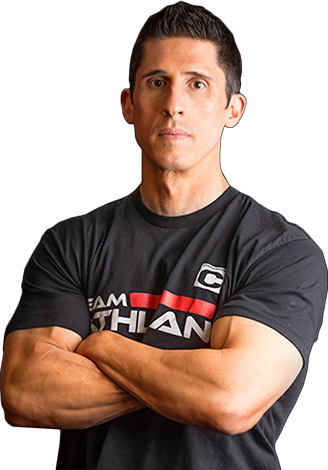
Jeff Cavaliere M.S.P.T, CSCS
Jeff Cavaliere is a Physical Therapist, Strength Coach and creator of the ATHLEAN-X Training Programs and ATHLEAN-Rx Supplements. He has a Masters in Physical Therapy (MSPT) and has worked as Head Physical Therapist for the New York Mets, as well as training many elite professional athletes in Major League Baseball, NFL, MMA and professional wrestling. His programs produce “next level” achievements in muscle size, strength and performance for professional athletes and anyone looking to build a muscular athletic physique.

